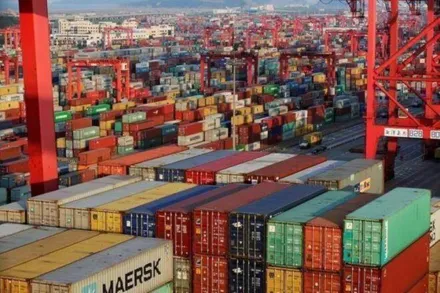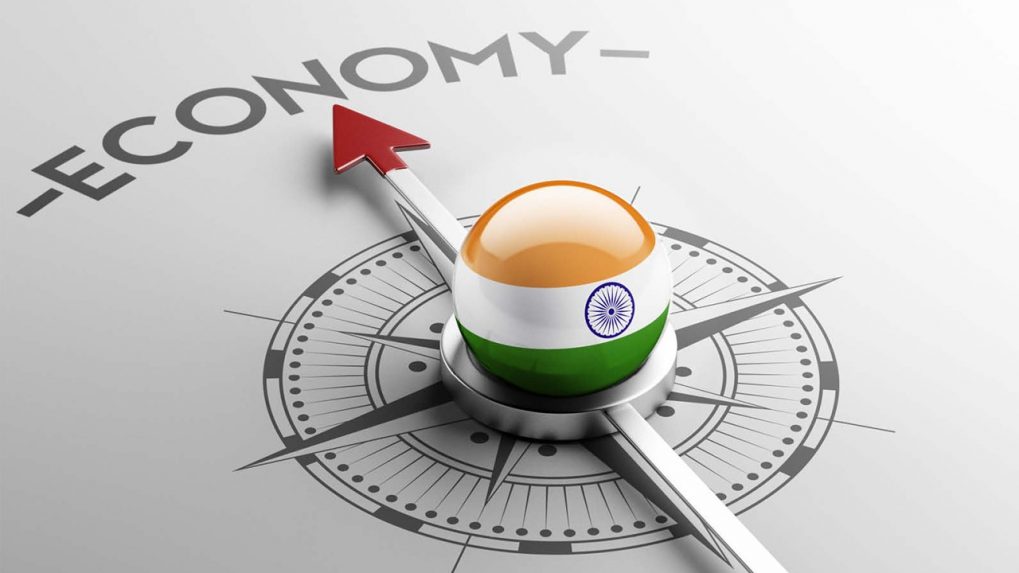- Courses
- GS Full Course 1 Year
- GS Full Course 2 Year
- GS Full Course 3 Year
- GS Full Course Till Selection
- Answer Alpha: Mains 2025 Mentorship
- MEP (Mains Enrichment Programme) Data, Facts
- Essay Target – 150+ Marks
- Online Program
- GS Recorded Course
- Polity
- Geography
- Economy
- Ancient, Medieval and Art & Culture AMAC
- Modern India, Post Independence & World History
- Environment
- Governance
- Science & Technology
- International Relations and Internal Security
- Disaster Management
- Ethics
- NCERT Current Affairs
- Indian Society and Social Issue
- NCERT- Science and Technology
- NCERT - Geography
- NCERT - Ancient History
- NCERT- World History
- NCERT Modern History
- NCERT Medieval History
- CSAT
- 5 LAYERED ARJUNA Mentorship
- Public Administration Optional
- ABOUT US
- OUR TOPPERS
- TEST SERIES
- FREE STUDY MATERIAL
- VIDEOS
- CONTACT US
India’s Rising 'Invisible' Exports
India’s Rising 'Invisible' Exports

Why in the News?
- India’s foreign exchange earnings from invisibles (services and private remittances) have surpassed those from visible (goods) exports.
- This marks a significant shift in the composition of India's foreign trade and current account balance.
|
Current Account Balance: The current account balance is the difference between a country’s total exports and imports of goods and services, plus net income from abroad (like interest and dividends) and net current transfers (like remittances and foreign aid). Formula: Current Account Balance= (Exports of Goods and Services) − (Imports of Goods and Services) + Net Income from Abroad+ Net Transfers |
What are the Key Highlights?
1. Rapid Growth in Goods Exports (2003–2014)
- India’s goods exports rose almost five-fold, from $66.3 billion to $318.6 billion between 2003–04 and 2013–14.
2. Stagnation and Recovery (2014–2022)
- Exports stagnated and fell below $300 billion by 2020–21.
- A rebound occurred post-COVID-19, with exports rising to:
- $429.2 billion in 2021–22
- $456.1 billion in 2022–23
- This jump was attributed to recovery in global trade and supply chains after the pandemic.
- UNCTAD reported world merchandise trade growth of 26.3% in 2021 and 11.7% in 2022.
3. Recent Decline in Goods Exports (2023–25)
- Exports dropped to:
- $444.1 billion in 2023–24
- $441.8 billion in 2024–25
4. Significant Rise in Invisibles (Services & Remittances)
- Receipts from invisibles (non-physical goods like services, remittances) have increased steadily, and at a faster pace:
- From $53.5 billion (2003–04) to:
- $233.6 billion (2013–14) → about 4.5x growth
- $576.5 billion (2024–25) → about 2.5x growth since 2013–14
- From $53.5 billion (2003–04) to:
5. Invisibles Surpass Goods Exports
- In 2013–14, goods exports were $85 billion more than invisibles.
- By 2024–25, invisibles exceed merchandise exports by over $130 billion.
6. Components of Invisible Exports
- IT and Business Services: Contributed significantly to net services exports, rising from $56.63 billion in 2020-21 to $125.27 billion in 2023-24.
- Private Remittances: Surged from $83.15 billion in 2020-21 to $125 billion in 2023-24, largely from Indian workers in Gulf and Western countries.
7. Services-Led Trade Surplus
- India has consistently run a surplus in services trade, unlike in goods trade, which remains in deficit.
- The invisibles surplus has helped narrow the current account deficit despite the heavy import bill.
|
Trade Surplus: A trade surplus occurs when a country’s exports of goods and services exceed its imports over a specific period. Formula: Trade Surplus= Total Exports−Total Imports (when Exports > Imports) |
8. Role of Emigration & IT Talent
- Migration to countries like the US, UK, and Gulf nations has boosted inward remittances.
- India’s large IT and skilled workforce continues to drive exports of software, consulting, and financial services.
9. Resilience of Invisibles
- These exports are less vulnerable to global trade wars, sanctions, and protectionist measures compared to goods exports like oil, electronics, and pharmaceuticals.
Challenges and Way Forward:
|
Challenges |
Way Forward |
|
Heavy dependence on Middle East remittances |
Diversify emigration destinations |
|
Geopolitical uncertainty (e.g., war, visa issues) |
Improve bilateral agreements on labor mobility |
|
Global slowdown in tech demand |
Promote diversification in services (e.g., health, legal, creative sectors) |
|
Lack of data and monitoring on service sector trade |
Create robust data collection and forecasting tools |
|
IT and service talent brain drain |
Incentivize high-end service jobs within India |
Conclusion:
India’s invisibles sector—comprising services and remittances—has emerged as a strong buffer against merchandise trade deficits. It ensures foreign exchange stability and strengthens the current account position. Moving forward, sustaining and diversifying these flows is critical for long-term economic resilience and balanced trade growth.
|
EnsureIAS Mains Question: India’s foreign exchange earnings are increasingly driven by invisible exports rather than merchandise trade. Discuss the implications of this shift on India’s trade strategy, employment patterns, and economic resilience. (250 Words) |
|
EnsureIAS Prelims Question: Q. With reference to India’s foreign exchange earnings, consider the following statements:
Which of the above statements is/are correct?
Answer: a Explanation: Statement 1 is Correct: Invisibles include services like IT, financial services, and remittances. |
|
Also Read |
|
| Public Administration Optional | |
| UPSC Monthly Magazine | Question Answer Practice For UPSC |



